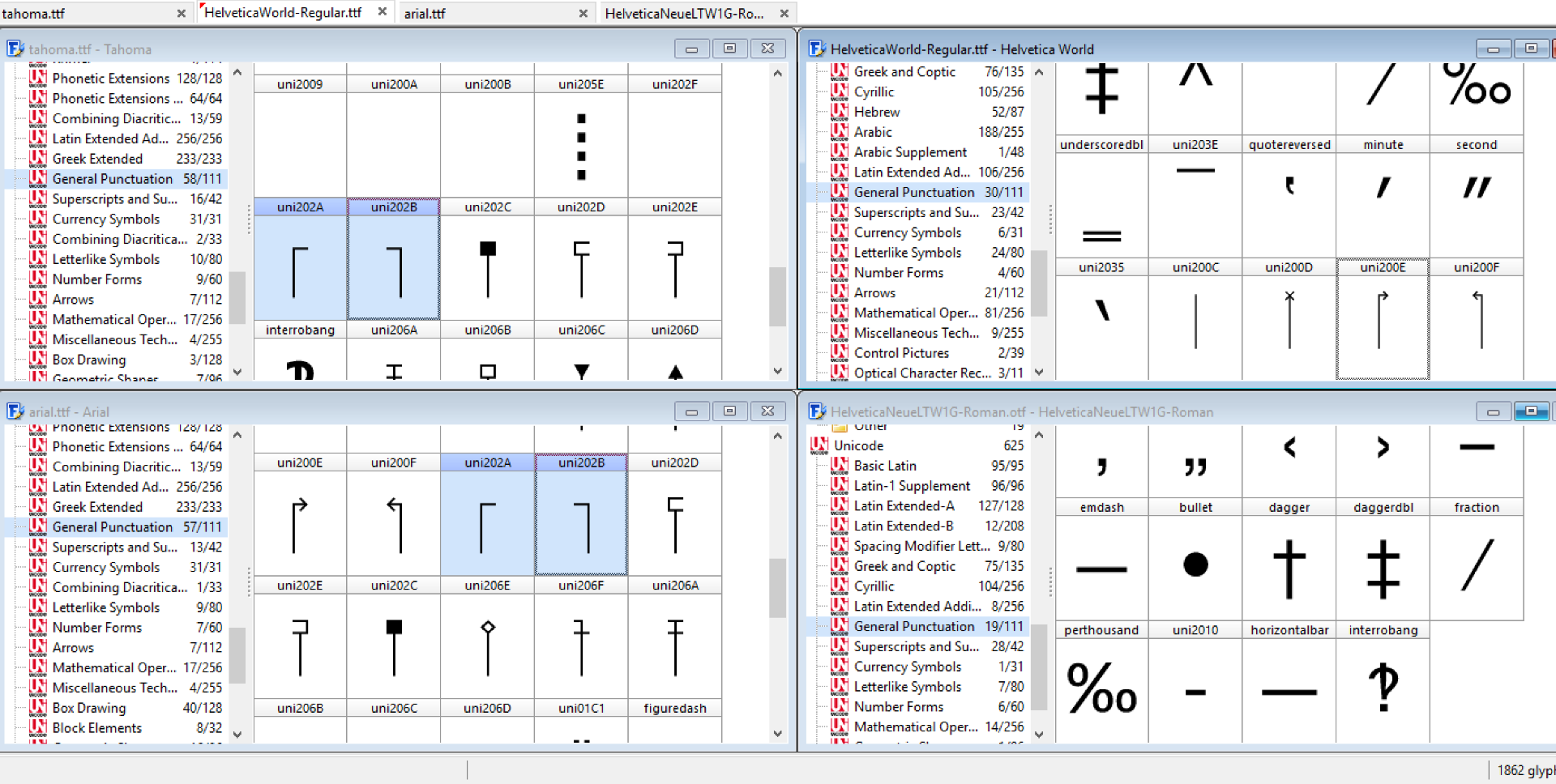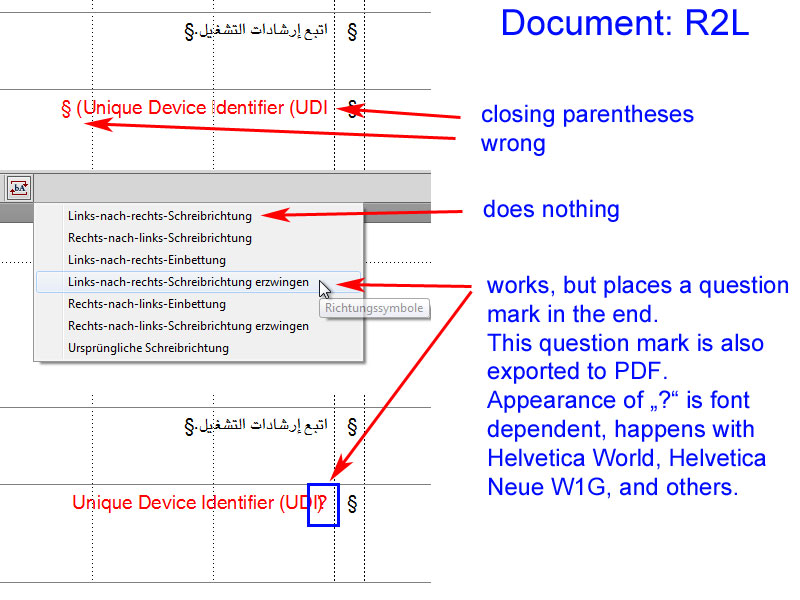- Home
- FrameMaker
- Discussions
- Re: Arabic/LTR/bidi parentheses in FM2015
- Re: Arabic/LTR/bidi parentheses in FM2015
Copy link to clipboard
Copied
Hello all,
Currently tearing my hair out with the direction/placement of parentheses in bilingual Arabic/English document.
What I want to achieve is what's on the bottom line of the screenshot, but without the question mark, so PCV(TgV) not (PCV(TgV as the line above.
If I put the cursor where the yellow highlight is and insert a Left-to-Right Mark, the parentheses are correct but the question mark appears (which shows in the final PDF).
I've tried all sorts of combinations but I just don't know what mark/embedding I need to put where to make it work.

I did read a post about FM 2015 that outlined the direction feature, which also said "Optionally, flip individual objects, such as paras, tables, images, lists, and neutral characters such as parenthesis." How do I do that?
 1 Correct answer
1 Correct answer
In the meantime we have examined it a little more closely:
When using Helvetica World and the HelveticaNewLT W1G W1G, FrameMaker displays a question mark where U-202A (left-to-right embedding) or U-202B (right-to-left embedding) is inserted.
This is not a bug in FrameMaker: The two necessary glyphs are simply missing in Helvetica World. Helvetica World supports only U-200E (left-to-right mark) and U-200F (right-to-left mark). The W1G is missing all four glyphs.

Fonts like Tahoma (tested in version
...Copy link to clipboard
Copied
Ok, so replying to my own thread because I am stupid. The question mark is down to the font rather than anything else. Will leave this here in case anyone is as daft as I am.
Copy link to clipboard
Copied
Replying to an old posting, but the problem seems still a current one (FM 13.0.5). To me it looks like a bug, and has nothing to do with being "stupid". Control characters and corresponding functions like switching the text direction should not be depending on the font.
Yes, the question mark at the end appears when you're using e.g. "Left-to-Right Override". This happens to me e.g. when using fonts like Helvetica World (Linotype, supports Arabic and Hebrew). Why? It does not happen when using Arial or Adobe Arabic, however, these fonts are not the ones to be used in our documents.
What makes the question mark appear? How to get rid of it, without being forced to use inappropriate fonts? The screen shot was created with a German FM version, but refers to the same function as shown above.

Copy link to clipboard
Copied
In the meantime we have examined it a little more closely:
When using Helvetica World and the HelveticaNewLT W1G W1G, FrameMaker displays a question mark where U-202A (left-to-right embedding) or U-202B (right-to-left embedding) is inserted.
This is not a bug in FrameMaker: The two necessary glyphs are simply missing in Helvetica World. Helvetica World supports only U-200E (left-to-right mark) and U-200F (right-to-left mark). The W1G is missing all four glyphs.

Fonts like Tahoma (tested in version 6.96), Arial, Times New Roman, Segoe UI, Adobe Arabic / Hebrew or Myriad Arabic support RTLE and LTRE.
FrameMaker displays a question mark for characters that are not assigned a defined glyph in the assigned font. This is not a bug but a sensible safety measure.
I recommend contacting the vendor of the font and asking for the two code points U-202A and U-202B to be added. Both code points are necessary for reasonable RTL publishing.
Regardless of this, I will suggest considering if missing glyphs could be displayed in the future with a more special character than "?" and if this can be optionally shown / hidden.
Copy link to clipboard
Copied
https://forums.adobe.com/people/Stefan+Gentz+%5BAdobe%5D schrieb
I recommend contacting the vendor of the font and asking for the two code points U-202A and U-202B to be added. Both code points are necessary for reasonable RTL publishing.
Just to complete the bug tracking on this: I've contacted Linotype, and they actually added the required glyphs to the Helvetica World font. It works now (version 1.07) correctly with the insertion of the RTL/LTR control characters. Thanks Stefan, and also thanks to Linotype support.

